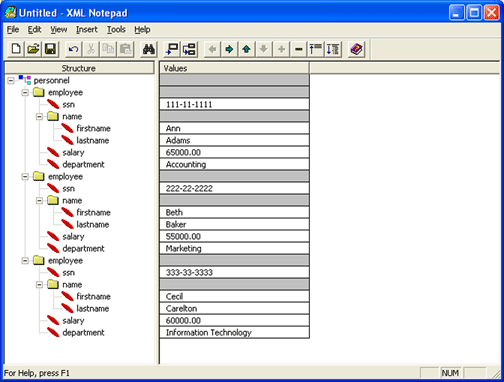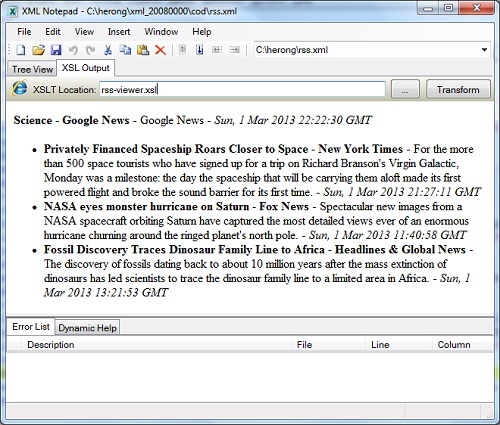
If you are missing or like to have some additional extensions assigned, please contact me. Xml, gpx, kml, html, xhtml, xht, vrml, svg, mml, rss, xaml, x3d, x3dv, x3db, dae, gml, lg, xliff, xlf, ts, plist, xib, storyboard, tmx, ts, 4dlink, cfg, dbk, wsdl, xsd, xsl, xslt Just edit, rearrange nodes or create new xml documents. This tool can open only well formed xml and it neither tells you what is wrong with the document nor repairs it.įor this puprpose you will need an expensive "swiss army knife" tool. There is no overhead with XPath and all that stuff. Note: This is not an swiss army knife for XML. You don't need to have developer skills anymore to edit xml files. If you are looking for an easy, lightweight and convenient xml editor, this is the right tool for you.Įditing a xml file is no rocket science anymore. Editing a xml file is no rocket science anymore. Special thanks to Jay Dave of the community for contributing this tip.If you are looking for an easy, lightweight and convenient xml editor, this is the right tool for you.Capturing Graphical Query Plans with Profiler.Capturing Deadlock Information in XML Format.Cross Walk - Returning XML Result Sets with SQL Server.BCP XML Format Files with SQL Server 2005.Check out the XML tips on for more information on managing XML with SQL Server 2005:.
#EDITOR XML NOTEPAD DOWNLOAD#


The traditional management tools may change to meet those needs, but until then using XML Notepad 2007 may be your best alternative.

Infinite undo/redo, even for major operations like re-indenting the file or making XML canonical.Blocks of XML can be expanded and collapsed.Cut/copy/paste maintains the syntax color.View XML as text, tree or spreadsheet-like grid.This tool provides the following functionality: What you can do with this tool is capture the needed information from SQL Server in XML format and then be able to work with the data in the XML Notepad 2007 tool.
#EDITOR XML NOTEPAD FREE#
One approach is to download a free tool from Microsoft called the XML Notepad 2007. As such, how should I go about working with XML result sets directly from SQL Server 2005? Although a number of the native SQL Server commands ( Cross Walk - SQL Server Query Plans) can have data returned in an XML format, working with the data from that point forward can be a major challenge, especially with large result sets. The Table view allows data to be cut and pasted from tabular data sources ie Excel, SQL Server management studio etc. Each section can be viewed as a tree or a table. Unfortunately, creating, managing and editing XML data has still been a challenge with the native SQL Server tool set. Liquid XML Studio has an XML grid editor. In particular organizations, working with XML has become the norm for particular needs and applications. With SQL Server 2005's native support of XML, XML seems to be popping up more and more in applications and as output from a variety of SQL Server administrative commands.


 0 kommentar(er)
0 kommentar(er)
